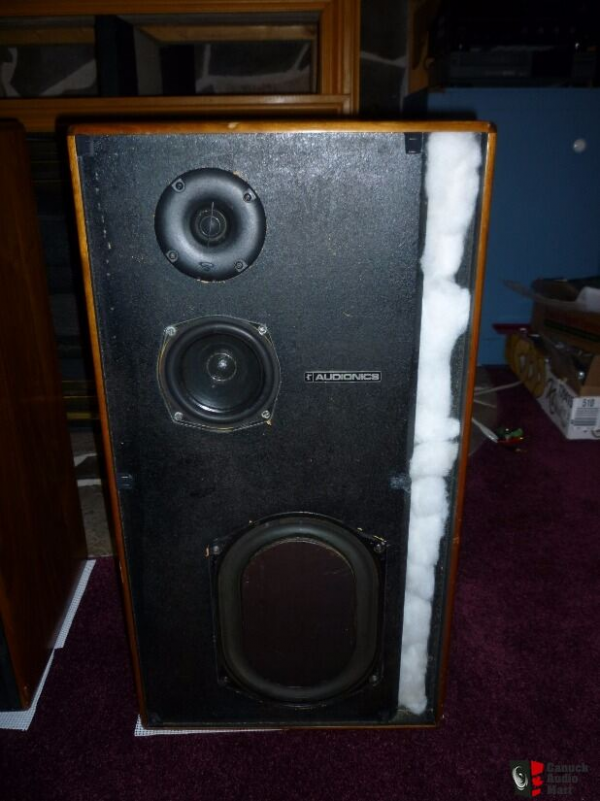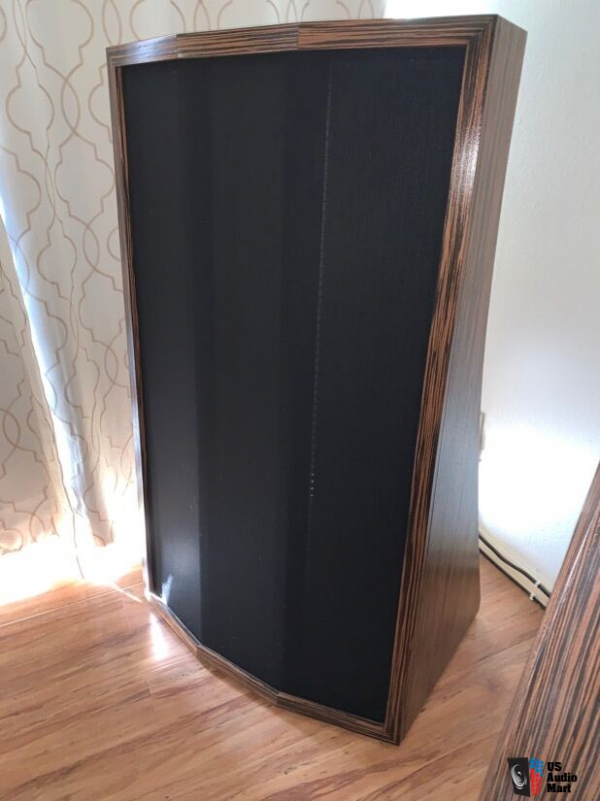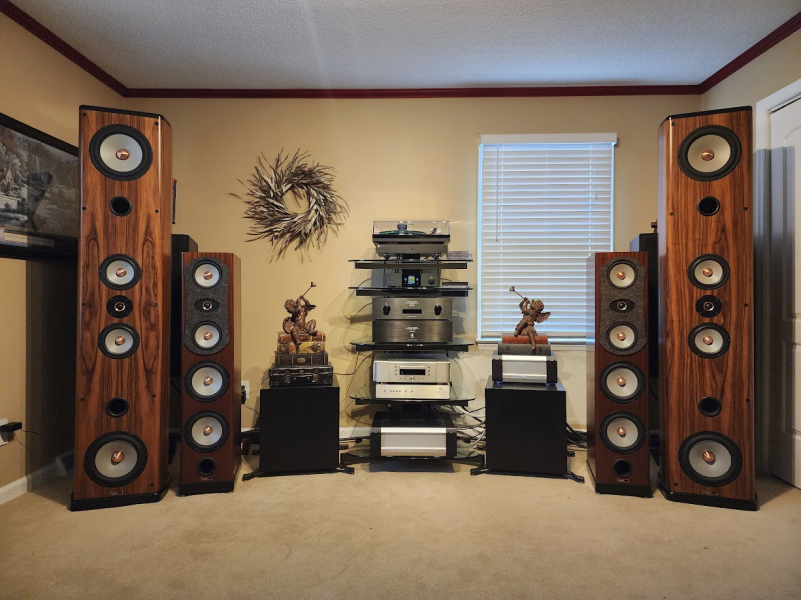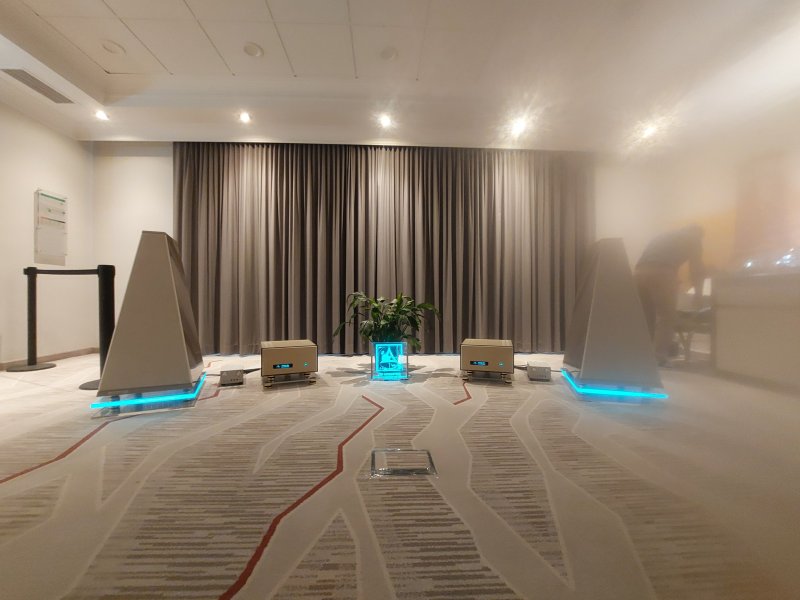You don't think applies, but maybe it might still very well do so.I think your analysis is interesting and probably a lot of truth…for box speakers. I don’t think it applies well to planar and dipole speakers.
Planer speakers A, B, C, D:
A) Traditional full-size planar. Will have very good centre image thanks to no filter-multi-way-issues with good vertical dimensions. Will also glue al lot of the far right/left to its planars, with little in between. Will have a hard time keep up with deep/high dynamic bass. Images can be a bit diffuse.
B) Planer with lower bass driver. This bass driver is never full time-coherent (unless you see the box under the planner sticking out in front a fair bit,
will have typically smaller planners above, which helps a bit for the centre + LR/ sticking bit mentioned above, but does not solve it. Images can still be a bit diffuse.
C) concentric planar: will have higher frequencies in centre, and the rest in various degrees (depending the speaker product, and cost) around it. Imaging will now be more precise, less diffuse, but certain M/L/R distribution is still not ideal and bass issues unresolved.
D) Special (and whatsbest kind of) planars that are able to move a lot more air and are also clearly designed to have dedicated low/mid/high sections (there is a currently very popular brand offering a pair that does this, or even two-pair type of solution, with the most outside placed pair of planars being dedicated to bass). The benefit of this design is no direct dynamic restrictions (although it might suffer from compression effects at some point: the panel needs quite strict suspension around to not have it distort to much in form of harmonics) and in case of the double-pair solution this is hardly compromised at all, with also now adding the earlier missed sound-stage width (thanks to reflections of the inner-pair on-to the outward-pair). And even a single pair can play loud (as I last week experienced again when walking in (door was open, so literally walked in a wall of sound) at Emile playing some electronic music in his new mega-large listening room, very impressive!
Dipole:
Dipole means we have the same output at the rear, but in negative phase.
-This will eliminate reflections that are parallel to the driver/planar, so to floor, ceiling, and side walls. This can be helpful, especially in smaller rooms.
-It also means reflections from the wall behind the speakers (I see this in US-reviews often to be called the front wall).
-If there is sufficient room behind the dipole speaker, this can result in a variations of depth-reflections of both the bad and good kind.
-in case of many such audio systems, especially those using planar speakers, there is a increased amount of second other distortion, and increased negative-phase second order distortion in play that will give enhanced feeling of sound-stage depth.
Recording/Electronics matching:
Even if dipole speakers or planars are very neutral and do not distort much, additional sound-stage depth can be achieved by using tube/transformer coupled type of electronics in the audio system, or have been used at production/mastering, especially of the kind that:
-have phase distortion (all of them have some, even most transistor types inflict some), meaning that image get more spread around in the sound-stage in a very likeable way
-adding even harmonics for a more emotional and rounded sound, and with the usually also somewhat inflicted phase-shifting potentially increasing depth of the sound-stage to foot-ball fields if so in the recording and well executed (on the electronics/speaker combination.
-adding also uneven harmonics, but preferably more on far L/R to give sparkle and spectacle in the non-centre parts of the soundtage.
Still, I would argue that a pair of perfect-coherent multi-way speakers can do the same trick. If there is no multi-way-phase issue this does not have to depend on the size of the speaker. Sound-stage-dynamic-speaking we do have to apply a very big speaker. But then we might want to cover its baffle with wool-felt to take out the unwanted collateral damage (Chronosonic, and Arrakis come to mind). Another method, especially if using steeper crossover slopes, is making the baffle into being a diffuser, for having a rounded front (eg. mm7, utopia). A second bass tower can also here bring added width to the stage (think also Sonya XVi).
So now we come down to 5 points:
1-Is the speaker planer, dipole, or box plus rear drivers? How is it executed?;
2-is it depending on baffle size, or second towers, for vertical and far-width enhancement using reflections on its baffle?
3-is it big/powerful enough to dynamically create that air-flapper- and stomach-hitting type of sound-stage impact?
4-do we need phase/even -order type distortion to scale-up the stage? What does best fit taste, room and recordings?
5-do we experience all the indirect sound from speaker baffles as a bigger sound-stage, or is the speaker-disappearance-from-beyond-wall-sound-stage thing (with all sounds three-dimensionally shaped and placed in and beyond the room, with genuine proportions) the holy grail we are ultimately after, but can't find speakers that do so without being dynamically (and frequency) unconstrained?
Last edited:




















